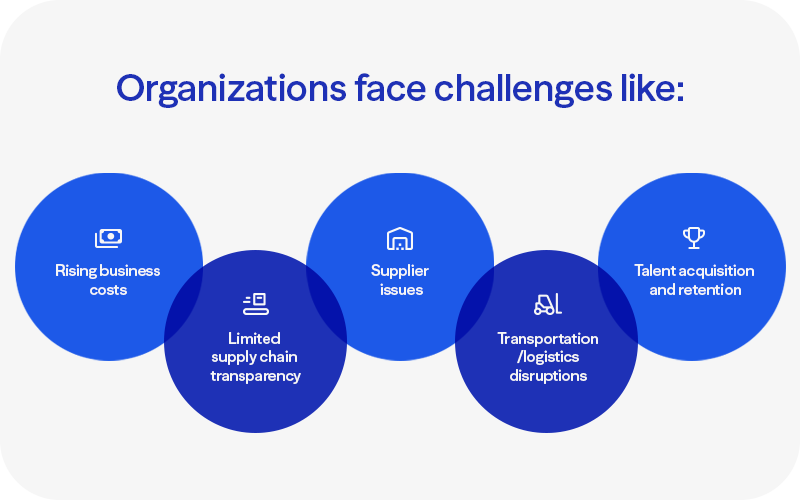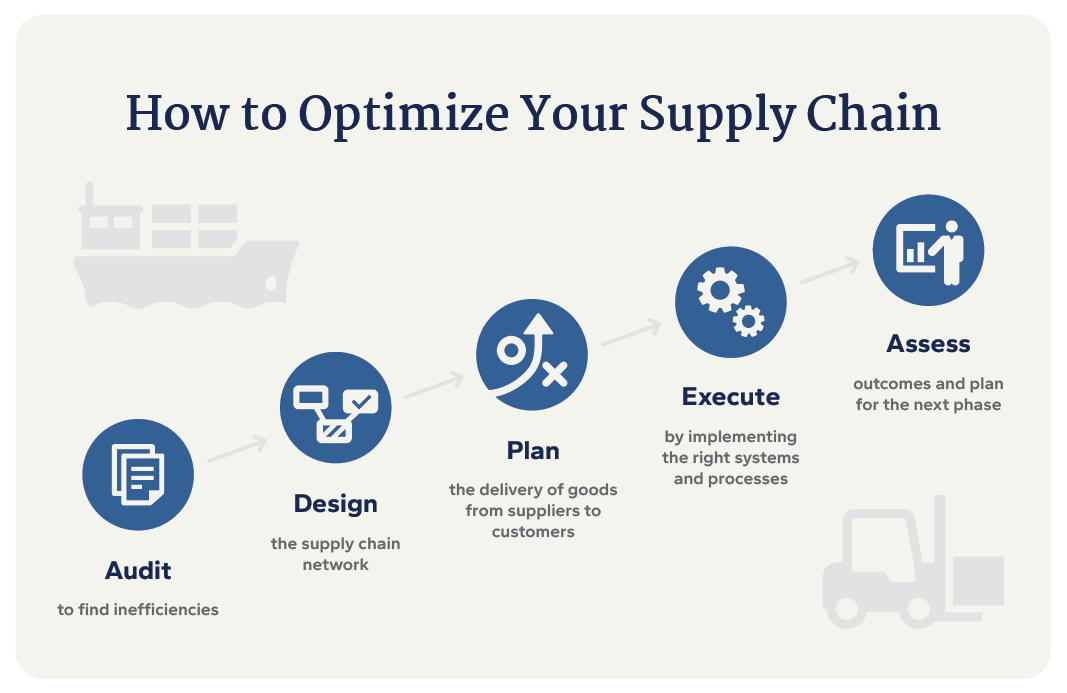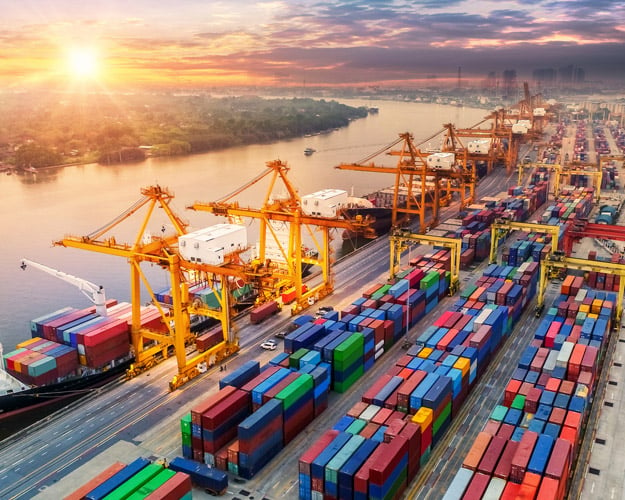Key Takeaways
- U.S. import tariffs have risen sharply, reaching nearly 20% by Q3 2025—up from 1.5% a year ago—prompting manufacturers to adapt with creative cost-reduction strategies.
- Amid ongoing global supply chain disruptions, 69% of manufacturers are now reshoring segments of their supply chain, influenced by tariff hikes, trade policies, and government incentives.
- Manufacturers are utilizing approaches like first-sale customs valuation, dynamic HTS coding, and duty-drawback programs to lower landed costs by 15–30% without major overhauls.
Rising costs, supply chain disruptions, and logistical challenges have plagued the manufacturing industry for years. But now, tariff changes, trade policies, and technology shifts are creating a state of chaos.
According to our 2025 Mid-Market Manufacturing Outlook, manufacturers are facing the following challenges.

The Impact of Tariffs and Taxes
Tariffs are typically used to help the U.S. compete more effectively in the international marketplace. The administration’s goal is to keep companies from sourcing products overseas and shift manufacturing production.
As of Q3 2025, average U.S. import tariffs have surged to nearly 20%, up from just 1.5% a year ago. Manufacturers are responding with “no-regret” strategies such as first-sale customs valuation, dynamic HTS coding, and duty-drawback programs. These approaches can reduce landed costs by 15–30% without requiring major supply chain overhauls.
Proactive Planning: Reshoring versus Offshoring
One noticeable trend is reshoring. The global supply chain disruption caused by COVID-19 initiated this change as the industry dealt with shipping delays and increased costs. Companies began to consider reshoring – bringing manufacturing and production back to the United States.
The trend continues today, with 69% of manufacturers reshoring at least part of their supply chain, due to trade policies, tariffs, taxes, and other government initiatives.
Recent legislation—specifically the One Beautiful Bill Act —has made domestic investment even more compelling. Manufacturers can now claim 100% bonus depreciation on qualified equipment, fully expense U.S.-based R&D, and leverage production-property credits for clean-energy facilities.
Before committing to reshoring, it’s important for manufacturers to think proactively — and long term — about their organization and its needs. After all, strategic domestic supply chain investments can take years to plan and develop.
Things to consider include:
- How and where are your products being sourced?
- How are your products being distributed?
- How will a location change impact your organization?
How will your location impact your organization?
Geographic location plays a significant role in matters such as international expansion or bringing operations back to the U.S. Factors like currency, tax structures, and other considerations are influenced by the physical area where your company operates.
Implications to consider include:
- Corporate income tax
- Individual taxation, including payroll
- State and local tax
- A variety of tax credits and incentives for sustainable buildings in the U.S.
- Workforce availability
- Proximity to suppliers
Read more: Key Considerations for Global Expansion
Reinvigorate Your Supply Chain Strategy
Supply chain is a constant topic of conversation, with over half of mid-market manufacturers citing supply chain disruptions as a top concern. For many, this includes rising transportation costs (41%), supplier issues (39%), limited transparency (21%), and transportation and logistics disruptions (21%).
Based on the fluctuating circumstances, we encourage clients to focus on three specific areas when looking into their supply chain:
- Import locations: Where will you place your centers of distribution?
- Manufacturing: Will you move your manufacturing center to the U.S.? How will you source materials and equipment?
- Design: How will you design your products? What types of facilities will you need? Are you adding new products or service lines that are U.S. based?
Leading manufacturers are also using AI-driven forecasting tools to model tariff scenarios, optimize inventory replenishment, and detect supply-chain bottlenecks in real time. These capabilities help teams respond faster to trade-policy shifts and supplier disruptions.

The Impact of Data
Digitization of the supply chain is critical for visibility. Our study found that 33% of manufacturers are working to digitize their supply chain processes and 45% are optimizing inventory management strategies.
Companies are consolidating production, shipment, and tariff data into centralized data lakes, then layering on dashboards that track landed costs, lead times, and utilization. This real-time visibility enables faster decision-making and more accurate forecasting.
This kind of integrated, transparent data helps with:
- Forecasting future shifts based on market fluctuations, inventory levels, and seasonal shifts.
- Assessing rising costs and improving demand planning and forecasting.
- Gaining stronger visibility into supply chain monitoring factors like production service rate, lead time, and inventory turn.
Prioritizing Operational Efficiency
A digitally optimized manufacturing facility can reduce manual tasks and shorten equipment downtime. AI tools and automation can speed up traditional processes and allow manufacturers to future-proof their operations. Our study found that over 90% of mid-market manufacturers feel ready to embrace smart manufacturing.
Rather than chasing flashy pilots, manufacturers should focus on embedding AI into core systems like ERP and MES to drive predictive maintenance, scrap-rate anomaly detection, and tariff impact modeling. A balanced portfolio—two or three targeted use cases plus vendor-built modules—delivers consistent ROI.
When this level of visibility is present, manufacturers can:
- Renegotiate products or contracts.
- Review and implement profitability and cash management planning, including transfer pricing analysis.
- Research investment in new manufacturing products or warehouse properties.
What’s Next
One thing is certain — the uncertainty will continue. And while you might not be able to predict what new trade policies or legislative shifts are coming, you can take strategic, proactive steps to be prepared.
Manufacturers who routinely review their processes, digitize their supply chain, and keep an eye toward efficiency will be ahead of the competition going forward.
After all, every organization deserves to realize its full potential. And we help our manufacturing clients do just that every day. Let us help you prepare for the now — and the next.
Navigating Tariffs for Your Business

Manufacturing, Distribution, and Logistics
Rely on the trusted expertise of manufacturing advisors to help you build and execute your strategic vision.
Who We Are
Eide Bailly is a CPA firm bringing practical expertise in tax, audit, and advisory to help you perform, protect, and prosper with confidence.



